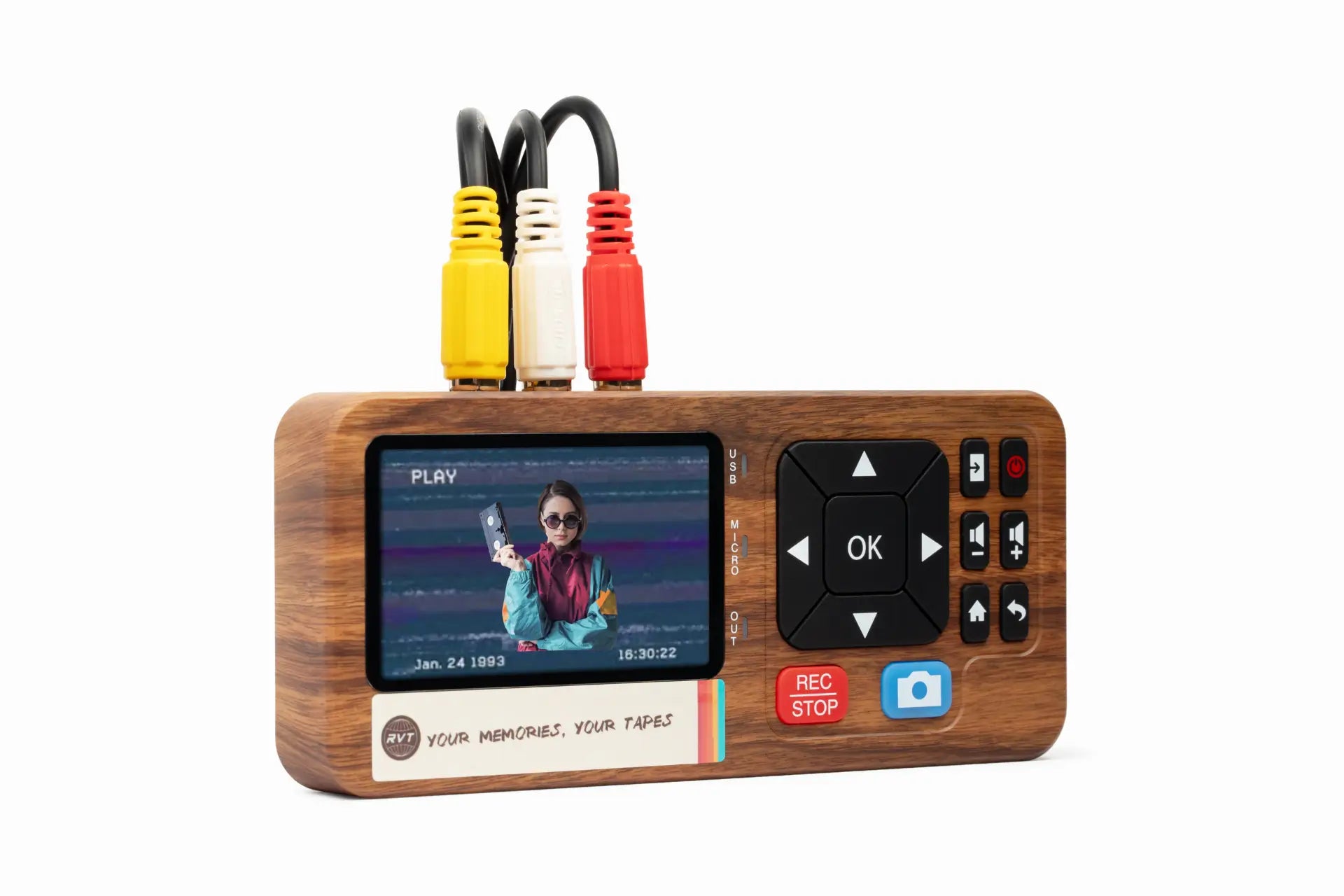RVT Digitizer 3.0 vs. Elgato Video Capture
You're sitting on decades of memories trapped on dying VHS tapes. The tracking lines are getting worse, the colors are fading, and you know time's running out. You've narrowed it down to two options: the RVT Digitizer 3.0 and the Elgato Video Capture. But here's the thing—one of these devices was built for the analog die-hards who live for simplicity and instant gratification. The other? It's tethered to your computer like it's still 2014.
Let's cut through the noise. This isn't just about specs—it's about which device actually gets your memories digitized without making you want to throw it out the window.
RVT Digitizer 3.0
The RVT Digitizer is a plug-and-play VHS-to-digital converter built for people who want to preserve old memories without the hassle.
View full details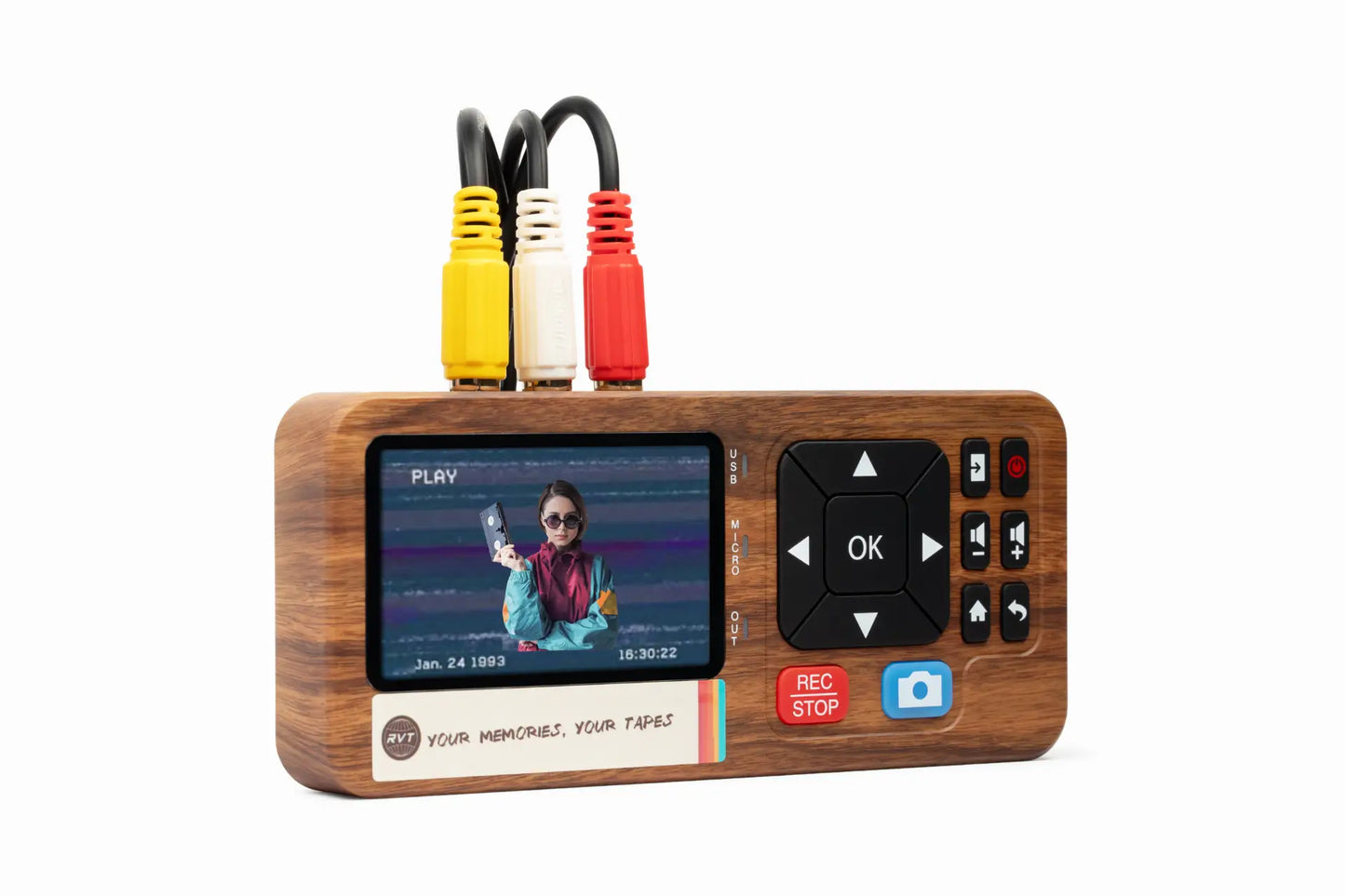
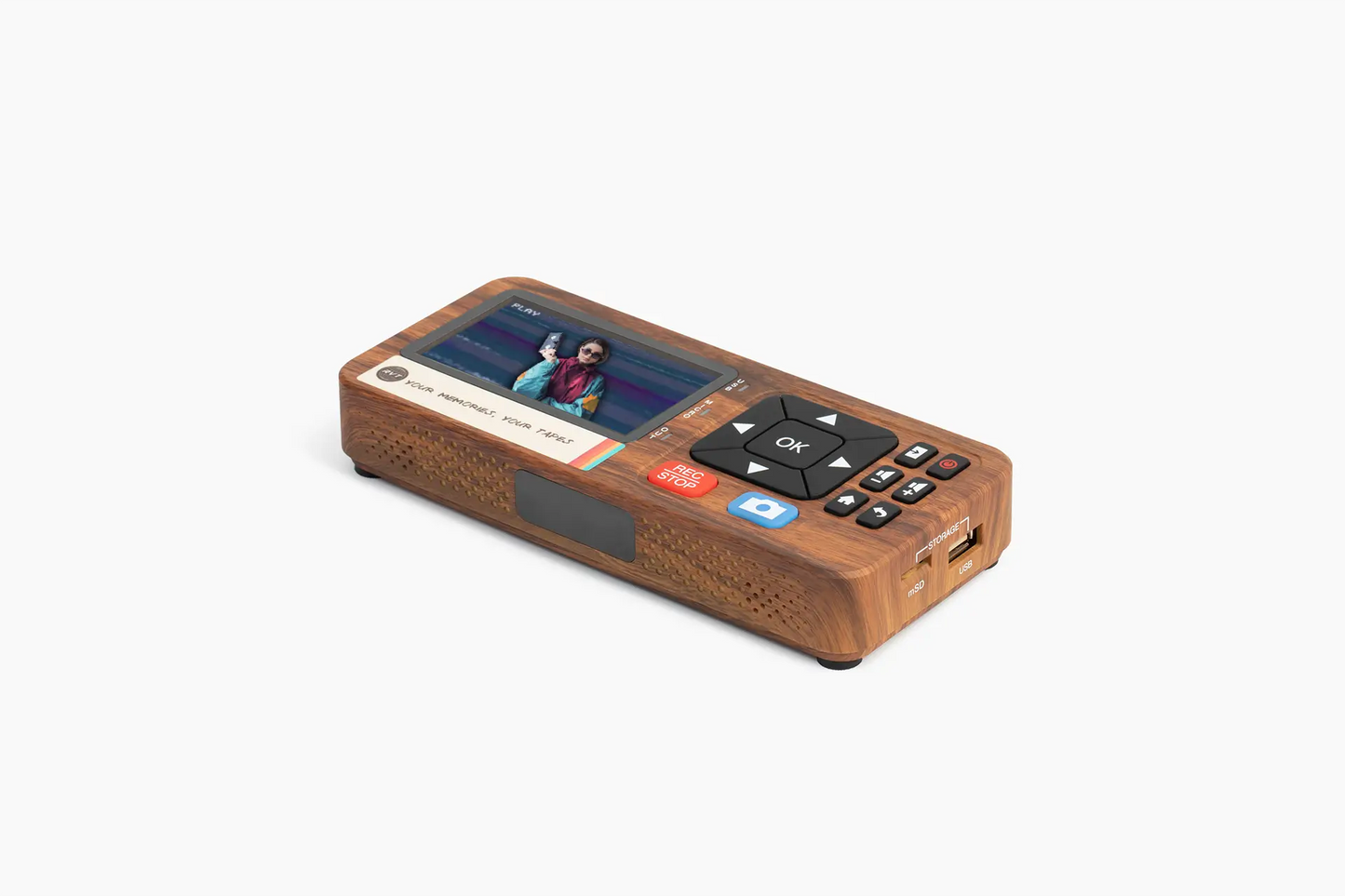
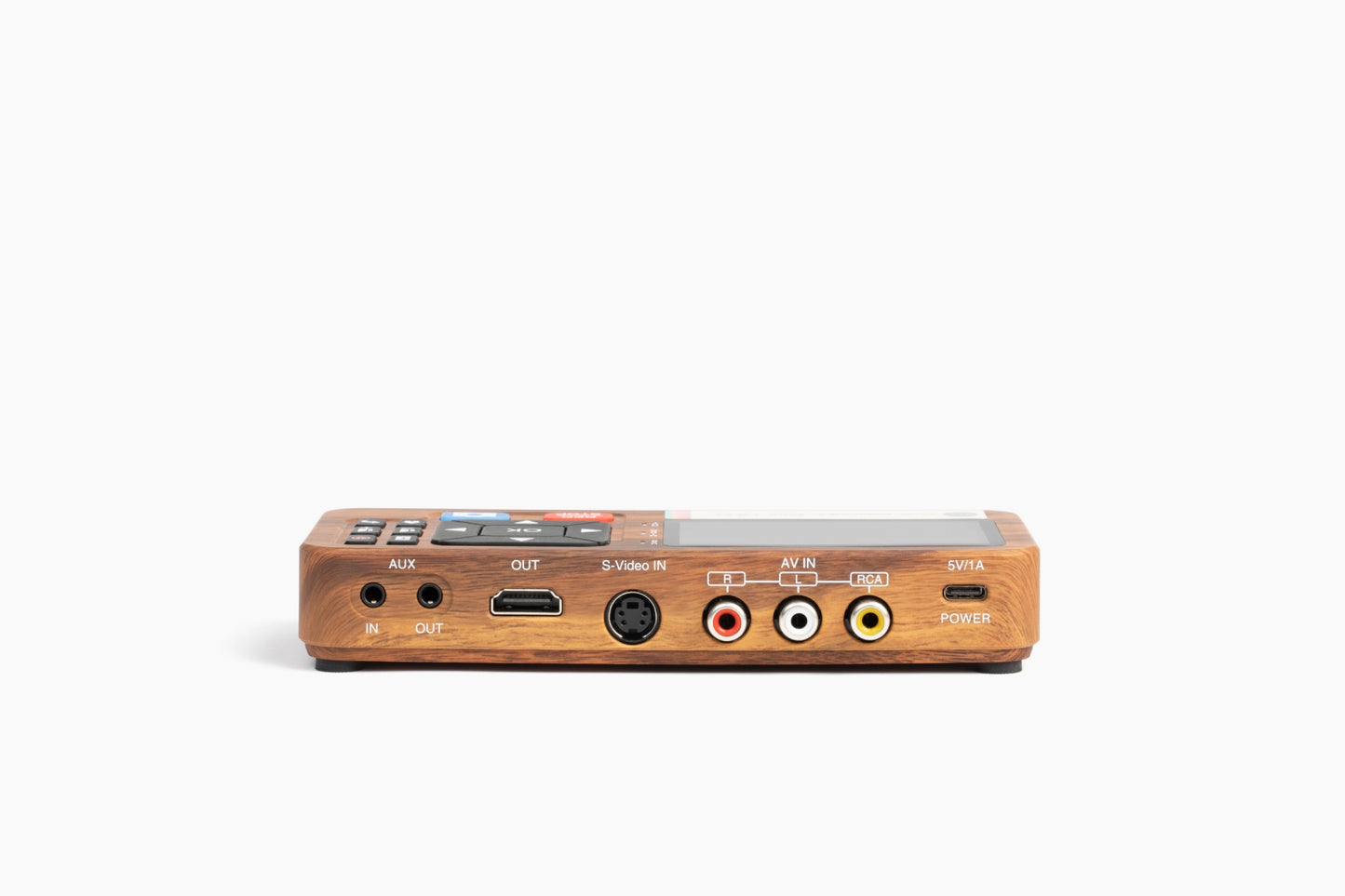
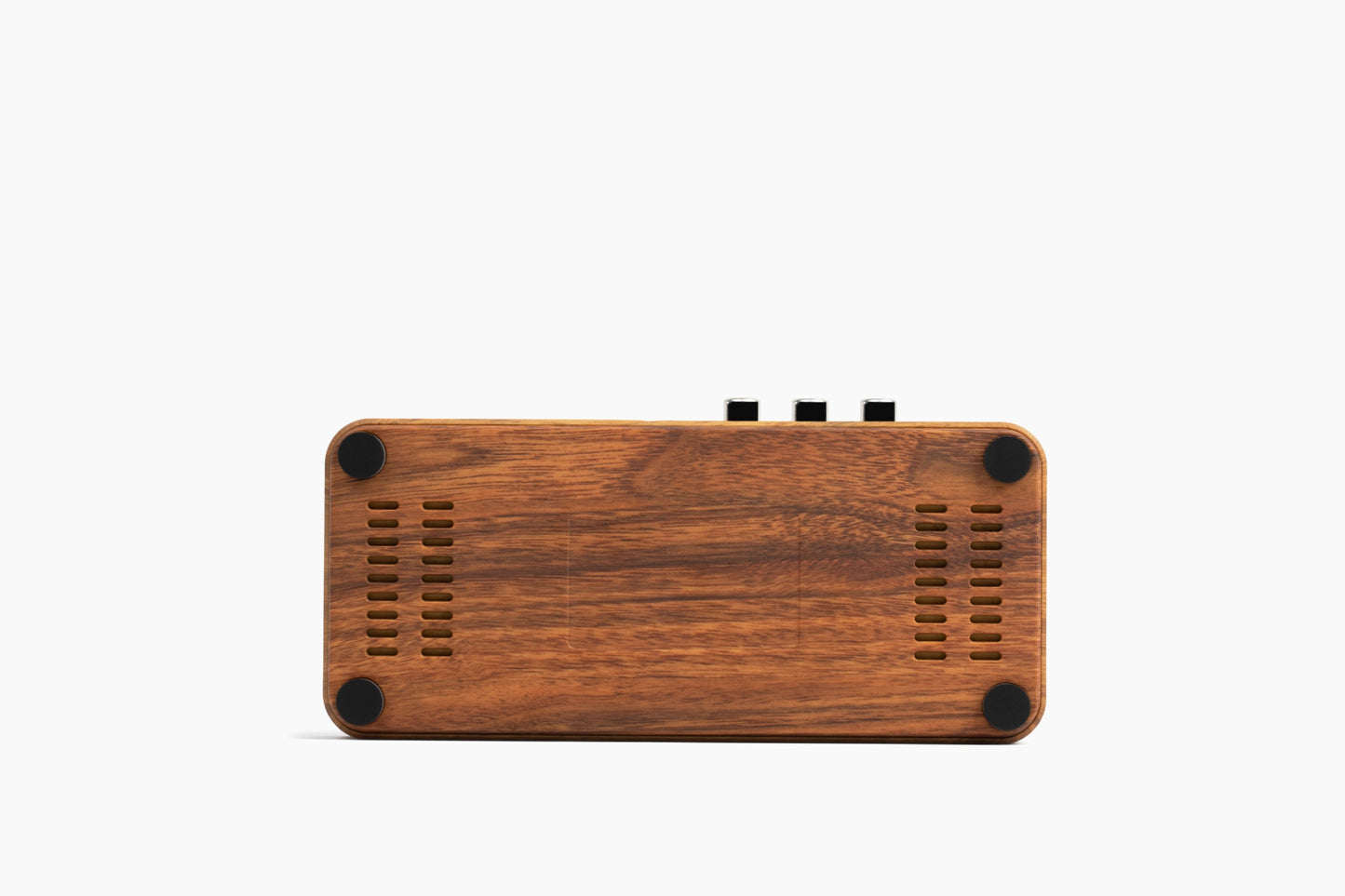
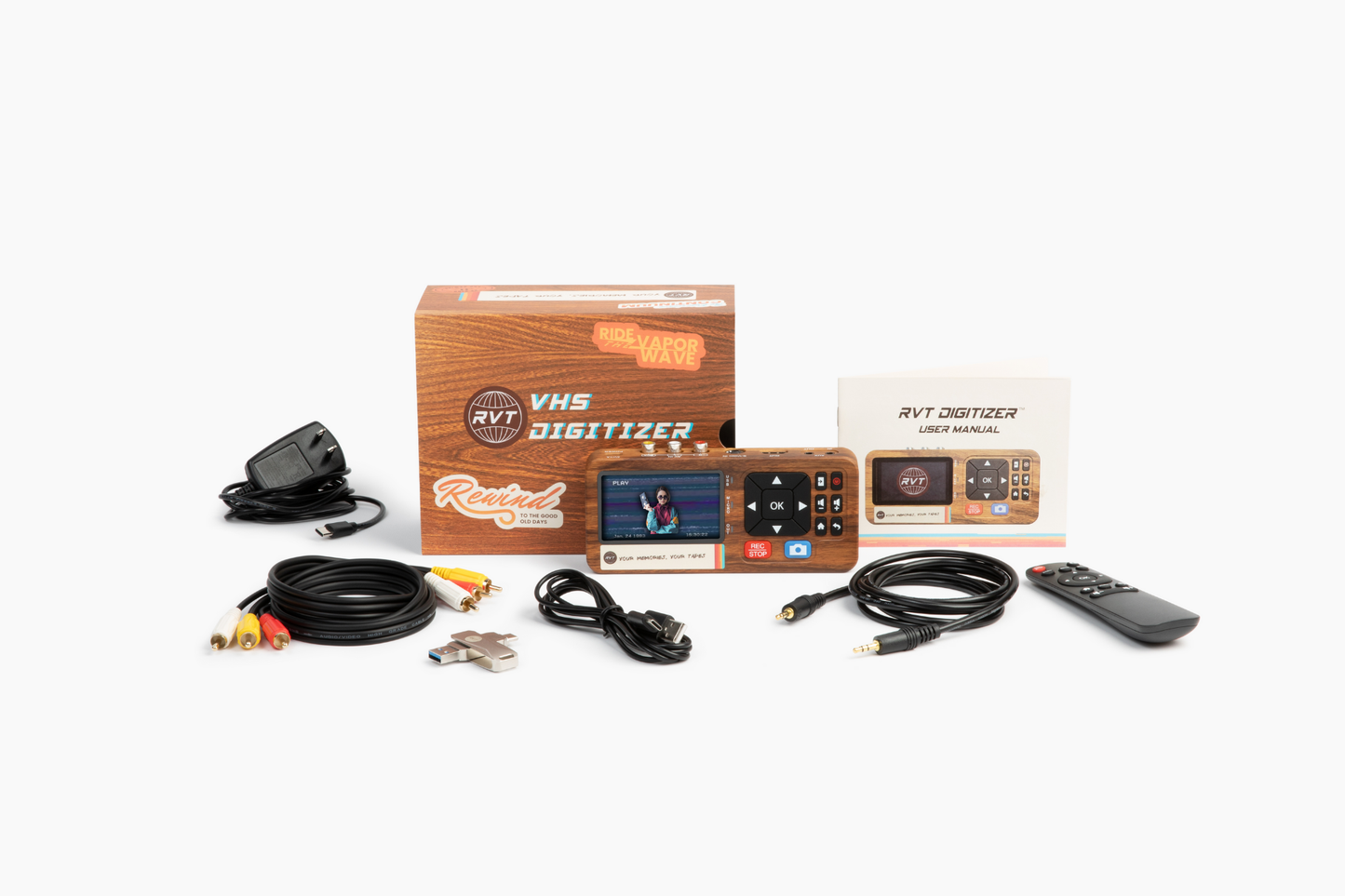
What Actually Matters When Digitizing Your VHS Collection
Back when you had to rewind tapes and slap the side of the TV to fix the signal, memories were made in analog. Now, those same tapes are deteriorating in boxes, and you're racing against magnetic decay. The choice between RVT Digitizer 3.0 and Elgato Video Capture isn't just about hardware—it's about philosophy.
Do you want plug-and-play freedom, or are you willing to babysit your computer for hours? The RVT Digitizer 3.0 is the standalone solution that converts VHS, camcorder footage, and retro console gameplay directly to USB or SD card. No PC required. No driver installations. No software crashes mid-recording.
The Elgato Video Capture takes a different route. It's computer-dependent, which means you're installing drivers, downloading software, and hoping your Windows 11 machine plays nice with decade-old code. For some, that's acceptable. For others who just want to hit record and walk away, it's a dealbreaker.
The stakes are higher than you think. Every time you play a VHS tape, you're literally wearing it down. Magnetic particles flake off with each pass through the VCR heads. That wedding video from 1987? It won't last forever. Neither will that grainy footage of your kids taking their first steps. The technology you choose now determines whether those memories survive another generation—or vanish into analog oblivion.
Here's what nobody tells you about VHS conversion: the quality of your capture device matters less than you think. VHS maxes out at 480p resolution. Both the RVT Digitizer and Elgato are working with the same source material—fuzzy, low-res, beautifully nostalgic footage. The real differentiator isn't video quality. It's workflow, reliability, and whether you'll actually finish the project before your tapes decay beyond recovery.
RVT Digitizer 3.0 vs. Elgato Video Capture—The Complete Breakdown
The Setup: Where Most People Give Up
RVT Digitizer 3.0:
Plug it in. Connect your VCR with the included RCA cable. Insert a USB drive or SD card. Hit record. You're capturing your memories in under three minutes. The built-in 3.5" preview screen lets you monitor progress without tying up your TV or computer. It's designed for people who have better things to do than troubleshoot software compatibility issues.
Elgato Video Capture:
Connect it to your computer via USB 2.0. Download drivers. Install the Elgato Video Capture software. Launch the application. Follow the wizard. Hope your computer doesn't decide to install a Windows update mid-recording. The Elgato requires your active participation—you can't just start a capture and walk away to make dinner. Your computer needs to stay awake, stay connected, and stay cooperative.
The difference becomes clear after tape number three. With the RVT, you're in a rhythm—swap tapes, hit record, move on. With the Elgato, you're monitoring software, checking file sizes, and restarting captures when sync issues pop up (and they will).
Resolution and Video Quality: The Great Equalizer
Here's where things get interesting—and where marketing departments love to blur the lines.
RVT Digitizer 3.0:
Captures in Full HD 1080P @ 30Hz. But here's the secret: your VHS tapes don't contain 1080p footage. They contain 480p (NTSC) or 576p (PAL) content. The RVT upscales this to 1080p for modern display compatibility, preserving that grainy magic while making it playable on your big screen HDMI TV. It outputs directly to HDMI, so you can watch your old tapes on modern equipment without losing the nostalgic charm.
Elgato Video Capture:
Maximum resolution is 640×480 (4:3) or 640×360 (16:9). This is closer to the native VHS resolution, which some purists prefer. The video is encoded in H.264 format at approximately 1.4 Mbps—adequate for viewing on iPads and iPhones, but noticeably softer than the RVT's output.
The verdict? Both are capturing the same source material. The RVT gives you better playback compatibility with modern TVs. The Elgato gives you smaller file sizes. Neither is "converting" your VHS to true high definition—because that's physically impossible. Anyone telling you otherwise is selling snake oil.
The Computer Question: Freedom vs. Dependence
RVT Digitizer 3.0:
Zero computer required. This is the device's superpower. You can digitize your entire collection in the living room while binge-watching your favorite show. The files save directly to your USB drive or SD card in universal MP4 format. When you're done, plug the USB into your smart TV, laptop, or connect it to your iPhone 15+ or Android device using the included USB-C adapter. Your footage is instantly accessible across all modern devices.
Elgato Video Capture:
Requires a Windows PC or Mac for every second of recording. Your computer becomes a bottleneck. USB 3.1 compatibility is reportedly "hit or miss" according to user reviews. Windows 11 support is questionable. The software hasn't been meaningfully updated in years, and you can feel it. Driver conflicts are common. Software crashes happen. Audio sync issues plague longer recordings.
This isn't theoretical. Real users report that the Elgato records for 3-6 minutes before freezing on certain systems. Others mention audio drift on tapes longer than 30 minutes. The RVT Digitizer 3.0 uses wall power (110-240V) for stable, uninterrupted transfers. The Elgato relies on USB power, which introduces instability.
Features That Actually Matter
RVT Digitizer 3.0 Exclusive Features:
- Built-in 3.5" LCD Screen: Monitor your capture in real-time without tying up other devices. See exactly what's being recorded—glitches, tracking issues, and all.
- One-Touch Recording: Hit record and walk away. Auto-stop timing prevents overwriting.
- Voiceover Recording: Add commentary directly during capture.
- Remote Control: Pause, stop, and navigate menus from the couch.
- Retro Gaming Streaming: Connect your NES, SNES, Genesis, or PS1. Stream to Twitch with no lag while recording to USB or SD.
- Direct HDMI Output: Watch your old tapes on modern TVs with instant upscaling. No conversion needed.
- Wall Power Adapter: Reliable, consistent power delivery prevents mid-recording failures.
- iPhone & Android Compatible: Direct connection to modern smartphones via included USB-C adapter.
Elgato Video Capture Features:
- Software Editing Tools: Basic trim functions in the capture software. You can trim the beginning and end of captured video before saving.
- Multi-Format Support: NTSC, PAL, SECAM, PAL/60—covers worldwide video standards.
- iTunes Integration: One-click export to iTunes or Windows Media Player.
- YouTube Upload: Direct upload from the software (when it works).
- Composite-to-SCART Adapter: Useful for UK users with SCART-equipped devices.
The Elgato offers more post-capture software integration. The RVT offers more real-world reliability and workflow efficiency.
Price and Value Proposition
RVT Digitizer 3.0:
Regular price $220, frequently on sale for $179. Includes everything you need: device, RCA cable, 32GB USB drive, power adapter, remote control, USB-C adapter for smartphones, and user manual. Two-year warranty with USA-based support in Texas. 30-day money-back guarantee.
Elgato Video Capture:
Approximately $88 on Amazon (when in stock). Includes device, RCA cable, Composite-to-SCART adapter, and USB cable. No USB drive included. No remote. No preview screen. Limited warranty information.
Here's the math: Professional VHS digitization services charge $15-30 per tape. If you have 10 tapes, that's $150-300. If you have 40+ tapes (like many families do), you're looking at $600-1,200. Both devices pay for themselves after a handful of conversions. The question is which one will actually get the job done without making you want to give up halfway through.
Real-World Performance: What Users Actually Experience
RVT Digitizer 3.0 Reviews:
"Finally Found the Perfect Solution - Saved My Family's 30-Year Video Collection. After months of researching VHS converters and nearly spending hundreds on professional conversion, I found this gem. The ability to connect directly to my iPhone 15 was a game-changer. I literally converted a tape, transferred it to my phone, and shared it within 20 minutes."
"Converted 12 VHS tapes and 8 Hi8 camcorder tapes in one weekend. The built-in screen let me monitor progress without tying up my TV. Wall power meant no dropouts."
Users praise the plug-and-play simplicity, the standalone operation, and the smartphone connectivity. Common theme: "I actually finished my digitizing project."
Elgato Video Capture Reviews:
"Neat device, cheaper than paying a service. You do need a VCR. It does require you to play the media all the way through, so it takes as long as the runtime of whatever you're converting. The video quality is good enough for VHS."
"Audio and video can drift out of sync on longer recordings. Not ideal, but manageable if you're doing shorter tapes."
"Compatibility with USB 3.1 or Windows 11 can be hit or miss."
Users appreciate the low price point and Mac compatibility. Common complaints center on software instability, audio sync issues, and the computer dependency making bulk digitization tedious.
The Gaming Angle: Retro Console Support
RVT Digitizer 3.0:
Built specifically for retro gamers. Connect your NES, SNES, Genesis, or PS1. Output to HDMI in real-time. Stream to Twitch with zero lag. Record every boss fight to USB or SD while you play. Your 16-bit glory lives on, captured in crisp digital format. The RVT treats retro gaming as a first-class use case, not an afterthought.
Elgato Video Capture:
Technically works with gaming consoles that have RCA outputs. But you're tethered to your computer, introducing latency into your gameplay. Not ideal for streaming or real-time recording. The Elgato was designed for passive video capture (transferring old tapes), not active gaming scenarios.
If you're a retro gaming content creator, the RVT is the clear winner. If you're only digitizing family videos and have no interest in streaming gameplay, the Elgato's limitations here won't affect you.
Workflow Efficiency: The 40-Tape Test
Let's say you have 40 VHS tapes, each 2 hours long. That's 80 hours of footage.
RVT Digitizer 3.0 Workflow:
- Plug in device, insert USB drive, connect VCR.
- Load tape, hit record, monitor on built-in screen.
- Tape ends, auto-stop kicks in. Swap tapes, repeat.
- No computer maintenance. No file management until you're completely done.
- When finished, plug USB into computer or phone. Files are ready.
You can knock out 4-6 tapes per day while multitasking (cooking, cleaning, watching TV). Total project time: 1-2 weeks of casual evening work.
Elgato Video Capture Workflow:
- Connect device to computer, launch software, configure settings.
- Load tape, start recording, monitor computer screen.
- Computer must stay awake and active for entire capture duration.
- After each tape, check for sync issues, re-capture if needed.
- File management happens continuously—organizing captures as you go.
- Software crashes require restarting the application and potentially re-capturing.
You can maybe manage 2-3 tapes per day because you're babysitting the computer. Total project time: 3-4 weeks of dedicated focus. Many users report giving up after 10-15 tapes due to frustration.
The dropout rate for VHS digitization projects is staggering. Most people convert 5-10 tapes and then abandon boxes of remaining footage. The RVT's standalone workflow dramatically increases the likelihood you'll actually finish what you started.
Durability and Build Quality
RVT Digitizer 3.0:
Feels premium. Wall-powered for consistent performance. Built-in screen adds functionality and perceived value. Two-year warranty suggests the manufacturer stands behind the product. Texas-based support means you're talking to actual humans who know the product.
Elgato Video Capture:
Compact and simple. No buttons, minimal design. Average build quality for the price point. The device itself is durable, but the software is the weak link—and software ages poorly. Elgato has largely shifted focus to their gaming capture cards, and this product feels legacy.
The Smartphone Connectivity Factor
This is where the RVT Digitizer 3.0 pulls decisively ahead.
Modern life happens on smartphones. Your kids want to see grandpa's old videos on their iPhone. Your sister wants to share that 1994 anniversary footage on Instagram. Your friend's mom wants to save digitized tapes to iCloud.
The RVT includes a USB-C adapter and makes smartphone connectivity effortless. You convert a tape, plug the USB drive into your iPhone 15+ or Android device, and immediately have access to your footage. You can edit clips in iMovie, upload to social media, or share via text message—all from your phone.
The Elgato requires you to capture on a computer, then transfer files to your phone manually. It's an extra step. Multiple extra steps, actually. And each extra step is an opportunity to procrastinate or give up.
In 2025, seamless smartphone integration isn't a luxury—it's a baseline expectation. The RVT delivers. The Elgato doesn't.
Technical Specifications Side-by-Side
Who Should Choose RVT Digitizer 3.0
You're the right fit for the RVT Digitizer 3.0 if:
- You have 10+ tapes to convert and want to actually finish the project.
- You value simplicity and plug-and-play operation over software features.
- You don't want your computer tied up for 80+ hours of capture time.
- You want to share digitized footage directly from your smartphone.
- You're digitizing retro gaming footage or planning to stream classic console gameplay.
- You need reliable wall power to prevent mid-recording failures.
- You want a built-in preview screen to monitor captures without additional equipment.
- You're willing to invest in premium hardware that includes everything you need.
Who Should Choose Elgato Video Capture
You're the right fit for the Elgato Video Capture if:
- You have 5 or fewer tapes to convert.
- You prefer computer-based workflows and don't mind software management.
- You want the absolute lowest upfront cost and already own USB drives.
- You're comfortable troubleshooting drivers and software compatibility issues.
- You have an older Mac and need confirmed macOS compatibility.
- You don't need smartphone connectivity or HDMI output.
- You're okay with 640×480 maximum resolution.
- You want built-in software editing tools for basic trimming.
The Hidden Cost of Cheap Equipment
Here's what budget VHS converters don't tell you: conversion failures are devastating. Imagine spending three hours capturing your parents' 50th anniversary video, only to discover the audio is out of sync. Or the file corrupted. Or the recording stopped at minute 47 of a 120-minute tape.
When you're working with irreplaceable memories, reliability isn't a luxury—it's non-negotiable. The $90 price difference between the Elgato and the RVT isn't just about features. It's about the probability you'll successfully complete your digitization project before your tapes degrade beyond recovery.
Every month you delay is another month of magnetic particle decay. Those tapes won't wait for you to figure out driver compatibility issues or troubleshoot software crashes. The best VHS converter is the one that actually gets your memories digitized—not the one that seemed like a good deal on Amazon.
File Management and Long-Term Storage
RVT Digitizer 3.0:
Creates universal MP4 files that work everywhere—Windows, Mac, iPhone, Android, smart TVs, cloud storage services. File sizes are optimized for modern playback while preserving quality. You get 32GB of storage included, enough for approximately 10-12 hours of VHS footage. Once full, pop in a new USB drive and keep going. Files are organized by recording date/time automatically.
Elgato Video Capture:
Creates H.264 or MPEG-4 files at approximately 1.4 Mbps bitrate. Smaller file sizes mean you can store more on a single drive, but compression is more aggressive. File organization is manual—you name each capture during the recording process. Files save to your computer's hard drive, requiring you to manage storage and backups independently.
Both formats are archival-ready. Neither will degrade over time like VHS tapes. Both can be backed up to cloud storage (Google Drive, iCloud, Dropbox) for redundancy. The RVT's higher bitrate gives you a bit more breathing room for future-proofing, but realistically, you're preserving 480p content either way.
The Upgrade Path: What Happens After Digitization
Once your tapes are digitized, what's next?
With the RVT, you have options. Edit in DaVinci Resolve or Adobe Premiere. Upscale using AI tools like Topaz Video AI. Create montages for family events. Share on social media. Archive to multiple cloud services. The MP4 files are universally compatible and ready for any workflow.
With the Elgato, your files are slightly more constrained by the lower resolution and bitrate. You can still edit and share them, but aggressive scaling or enhancement will reveal the limitations of the source capture more quickly.
Neither device is designed for professional restoration work. If you need frame-by-frame color correction or advanced noise reduction, you'll want to explore professional digitization services or higher-end capture hardware. But for 99% of families preserving home movies, both the RVT and Elgato deliver acceptable results.
Software Support and Future-Proofing
RVT Digitizer 3.0:
Standalone hardware means software updates aren't critical to functionality. The device works today and will work in 2030. No dependence on operating system compatibility or driver updates. Future-proof by design.
Elgato Video Capture:
Requires Elgato's proprietary software, which hasn't seen major updates in years. As operating systems evolve (Windows 12, macOS 16+), compatibility becomes increasingly questionable. Users already report issues with Windows 11 and newer USB 3.1 ports. Elgato has shifted development focus to gaming capture cards, suggesting this product line is effectively in maintenance mode.
This matters for long-term usability. If you have 100 tapes and plan to digitize them over the next two years, you need equipment that will still function reliably at the end of that timeline. The RVT's standalone nature makes it more resilient to technological change.
The Verdict: Context Matters
If money is tight and you only have a handful of tapes to convert, the Elgato Video Capture gets the job done at minimal cost. It's not glamorous, but it works—as long as your computer cooperates.
If you're serious about preserving your analog archive, the RVT Digitizer 3.0 is the superior choice. It costs more, but it delivers standalone operation, smartphone connectivity, HDMI output, gaming support, and most importantly—reliability. The included accessories (USB drive, remote, USB-C adapter) add real value. The two-year warranty and Texas-based support provide peace of mind.
For most families with 20+ tapes to digitize, the RVT isn't just worth the price premium—it's essential. The time you'll save on setup, the frustration you'll avoid from software crashes, and the satisfaction of actually finishing your project more than justify the investment.
The RVT Digitizer 3.0 is built for people who refuse to accept that physical media is dead—and who have better things to do than troubleshoot capture software.
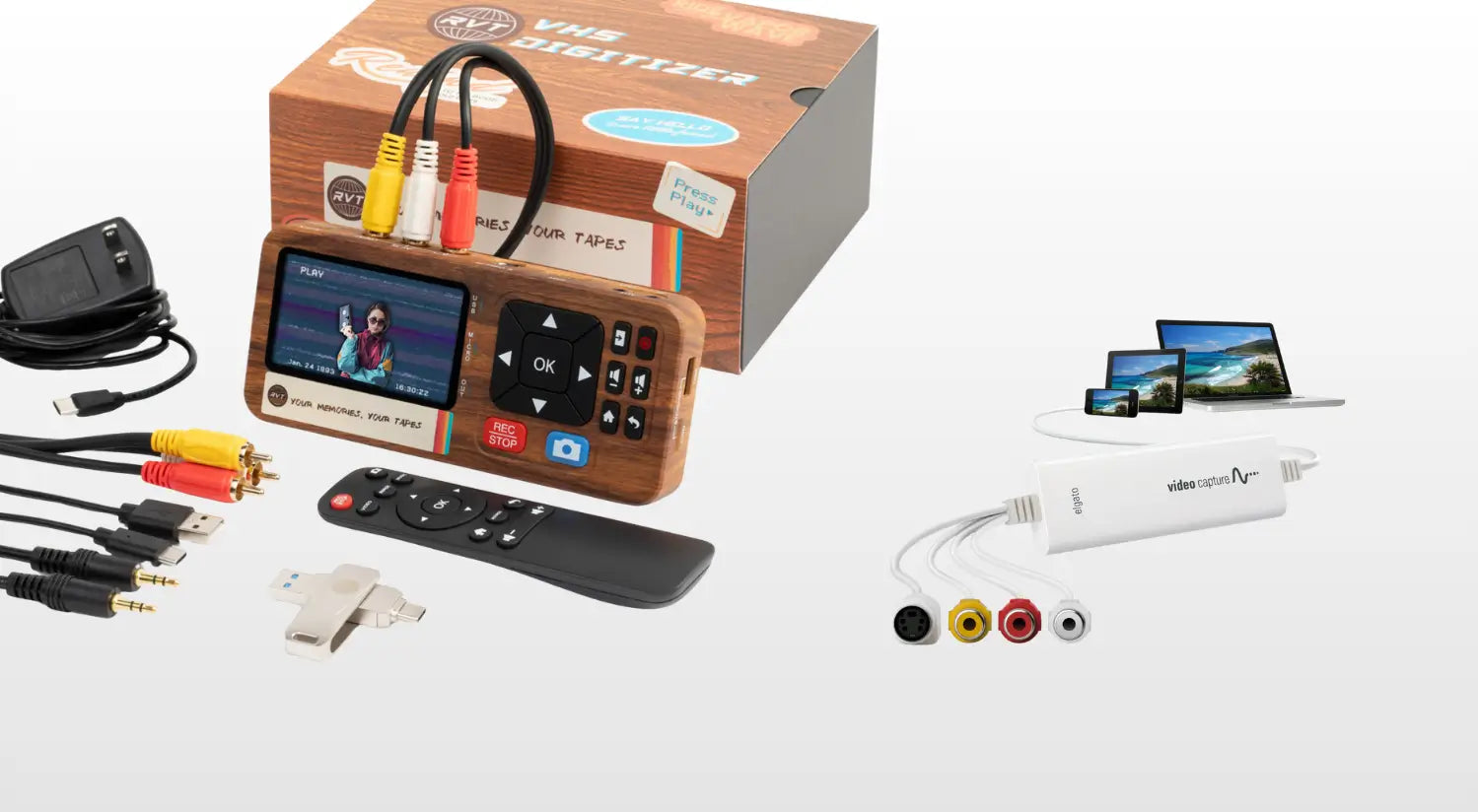
Related Resources:
- Best VHS to Digital Converter Collection
- Best Camcorder to Digital Converter
- VHS to Computer Converter (Mac & PC)
- Unlock Your Analog Archive: The RVT Digitizer's Guide to Preserving VHS Tapes & More
- The Hidden Risks of Shipping Your VHS Tapes (And Why RVT is the Smarter Choice)
- RetroVision Technology Launches RVT Digitizer 3.0: A Smarter, Reliable Solution to VHS-to-Digital Conversion
FAQS
RVT Digitizer 3.0 vs. Elgato Video Capture
Q: Do I need a computer to use the RVT Digitizer 3.0?
A: No. The RVT Digitizer 3.0 is a standalone device that converts and saves footage directly to a USB drive or SD card without any computer required. The Elgato Video Capture requires a Windows or Mac computer for all recording operations.
Q: Which device has better video quality?
A: The RVT Digitizer 3.0 captures in Full HD 1080P @ 30Hz with upscaling, while the Elgato maxes out at 640×480 resolution. However, both are limited by the source VHS quality (480p maximum). The RVT provides better compatibility with modern HDMI displays.
Q: Can I connect either device to my iPhone or Android phone?
A: The RVT Digitizer 3.0 includes a USB-C adapter for direct connection to iPhone 15+ and all modern Android devices. The Elgato requires you to capture on a computer first, then transfer files to your phone manually.
Q: How long does it take to digitize a 2-hour VHS tape?
A: Both devices capture in real-time, meaning a 2-hour tape takes 2 hours to digitize. The difference is workflow efficiency—the RVT allows hands-free operation while the Elgato requires computer monitoring.
Q: Which device is better for retro gaming footage?
A: The RVT Digitizer 3.0 is specifically designed for retro gaming, with HDMI output, low-latency streaming support, and simultaneous recording while playing. The Elgato Video Capture is primarily for passive video transfer and introduces latency when used with game consoles.
Q: What's included in the box with each device?
A: The RVT Digitizer 3.0 includes the device, RCA cable, 32GB USB drive, power adapter, remote control, USB-C adapter, and manual. The Elgato Video Capture includes the device, RCA cable, Composite-to-SCART adapter, and USB cable. No USB drive is included with the Elgato.
People Also Ask
Can the RVT Digitizer 3.0 convert camcorder tapes?
Yes, the RVT Digitizer 3.0 works with any device that has RCA or S-Video outputs, including Hi8, Video8, MiniDV camcorders, and VHS-C cameras. It handles NTSC, PAL, and SECAM formats.
Does the Elgato Video Capture work with Windows 11?
User reports suggest compatibility with Windows 11 is inconsistent. Some users experience no issues, while others report software crashes and USB 3.1 compatibility problems. Always download the latest drivers from Elgato's website before attempting use on newer systems.
How much storage do I need for VHS digitization?
A 2-hour VHS tape digitized at standard quality produces approximately 2-3GB file size. A 32GB USB drive holds roughly 10-12 hours of footage. For large collections, plan on 1TB+ of storage (either multiple USB drives or a dedicated external hard drive).
Can I edit videos captured by the RVT Digitizer 3.0?
Yes, the MP4 files created by the RVT are universally compatible with all major video editing software including iMovie, Windows Movie Maker, Adobe Premiere, DaVinci Resolve, and Final Cut Pro.
Why is the Elgato Video Capture so much cheaper?
The Elgato Video Capture is cheaper because it outsources processing to your computer (no built-in screen or hardware encoding), includes fewer accessories (no USB drive, no remote, no smartphone adapter), and captures at lower resolution (640×480 vs 1080p).
Which device has better customer support?
The RVT Digitizer 3.0 offers USA-based support in Texas, a 2-year warranty, and 30-day money-back guarantee. Elgato provides standard warranty coverage, but support quality varies according to user reviews.
Can I digitize copyrighted VHS movies with either device?
Both devices are designed for personal, non-commercial use. They may not work with commercially produced tapes that include copy protection (such as most Hollywood movies). Check your local laws regarding personal backups of copyrighted material.
Is it worth paying more for the RVT Digitizer 3.0?
If you have 10+ tapes to digitize, value standalone operation, want smartphone connectivity, or need reliable hardware that won't crash mid-recording, the RVT Digitizer 3.0 is worth the premium. For small collections (5 or fewer tapes) and users comfortable with computer-based workflows, the Elgato offers acceptable budget-friendly performance.
Ready to rescue your memories from magnetic decay?
The clock is ticking on those VHS tapes. Every day you wait, the magnetic particles are flaking off, the colors are fading, and the tracking is degrading. The best time to digitize your collection was ten years ago. The second best time is right now—before it's too late.
Choose the device that matches your project scope and patience level. Then get to work. Your future self will thank you for preserving these irreplaceable moments before they disappear forever.
Shop RVT Digitizer 3.0 | Regular price $220.00
Collection: RVT Digitizer 3.0 vs. Elgato Video Capture
-
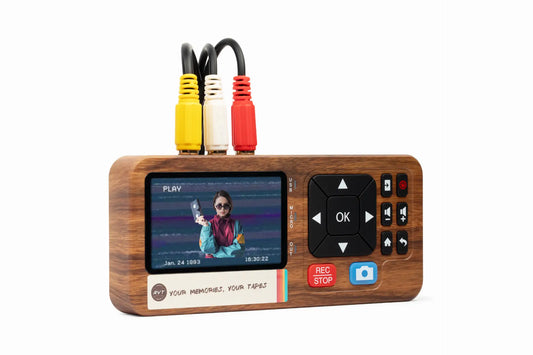 Sale
SaleRVT Digitizer 3.0
Regular price $179.00Regular priceUnit price / per$220.00Sale price $179.00Sale

